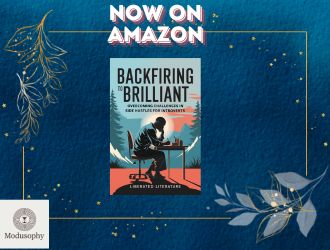
Beginners’ Guide to Mindfulness Techniques
Key Takeaways
- Mindfulness techniques are accessible and beneficial for anyone looking to reduce stress and enhance well-being.
- Simple practices such as breath awareness and body scans can be easily incorporated into daily routines.
- Utilizing guided resources, such as books and courses, can enhance the mindfulness experience.
- Tools like journals and meditation aids support mindfulness practices.
Mindfulness is a powerful practice that encourages living in the present moment. For beginners, diving into the world of mindfulness can feel overwhelming, with so many techniques and resources available. This guide presents an overview of several mindfulness techniques that are perfect for beginners, as well as product recommendations that can enhance your practice.
What is mindfulness?
Mindfulness refers to the psychological process of bringing one's attention to the present moment. It involves observing thoughts, feelings, and bodily sensations without judgment. This quality of awareness can help reduce stress and promote emotional well-being.
Benefits of practicing mindfulness
- Enhances emotional regulation
- Improves focus and concentration
- Reduces stress and anxiety
- Increases self-awareness
- Promotes a sense of peace and well-being
Effective mindfulness techniques for beginners
1. Breath Awareness
One of the simplest ways to practice mindfulness is through breath awareness. This technique involves concentrating on your breath as it flows in and out of your body. When your mind wanders, gently bring it back to your breath.
2. Body Scan
The body scan technique encourages you to mentally scan your body for sensations, areas of tension, or discomfort. Starting from your toes and moving upward allows for a deep physical relaxation.
3. Guided Meditation
Using guided meditations can be especially helpful for beginners. You can find many audio resources or mobile apps that lead you through effective meditation sessions.
4. Mindful Walking
Mindful walking involves focusing on the experience of walking, feeling each foot as it touches the ground, and taking notice of your surroundings. Make every step deliberate and intentional.
5. Journaling
Keeping a mindfulness journal can help track your thoughts and feelings as you practice. Writing down your experiences enhances self-reflection and deepens your mindfulness practice.
Recommended products for mindfulness practice
Utilizing helpful resources can enhance your mindfulness practices. Here are two great product recommendations:
Mindfulness: A Beginners Guide to Finding Inner Peace
This Kindle edition provides a comprehensive introduction to mindfulness techniques and how they can help you find inner peace.
Learn MoreMindfulness for Beginners: Simple Techniques to Relieve Stress & Anxiety
This book offers practical techniques that are easy to follow, making it an ideal choice for those starting their mindfulness journey.
Explore NowPracticing mindfulness daily
Incorporating mindfulness into your daily routine doesn’t have to be time-consuming. Here are some simple ways to start:
- Set aside a few minutes each day for mindfulness practice.
- Use reminders to pause and breathe throughout your day.
- Make mindfulness a family activity; involve loved ones.
- Use mindfulness techniques during routine activities, like eating or walking.
Conclusion
Mindfulness is a rewarding practice that can help you lead a more present and fulfilling life. By exploring techniques and utilizing supportive resources, you'll find growth and peace in your mindfulness journey. Start with simple techniques, and gradually incorporate more as you become comfortable. Remember, the key is consistency and patience!
Tips for Beginners
- Be patient with yourself; mindfulness is a skill that takes time to develop.
- Create a designated space for your practice.
- Engage in mindfulness communities, either online or in person.
Further reading and resources
For more insights about mindfulness and its benefits, explore the following articles:



